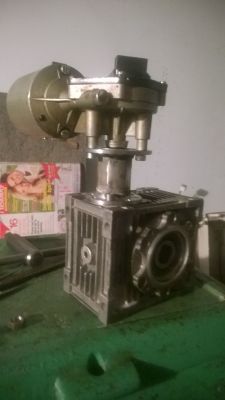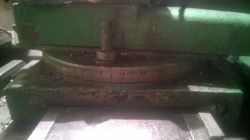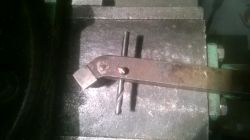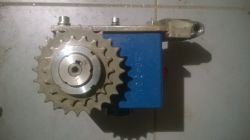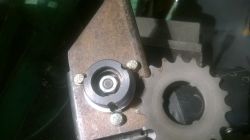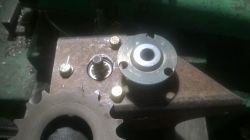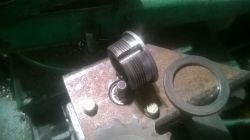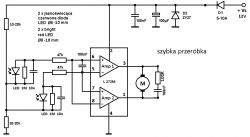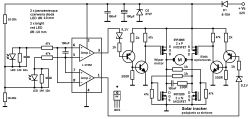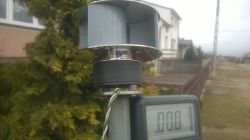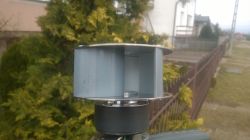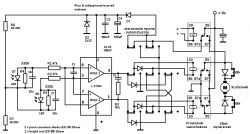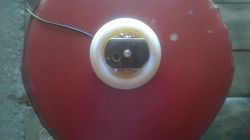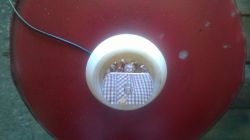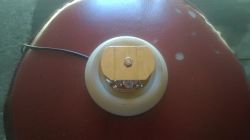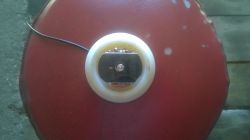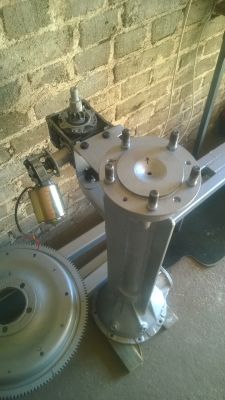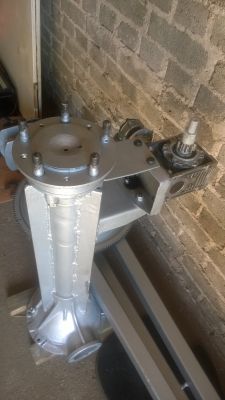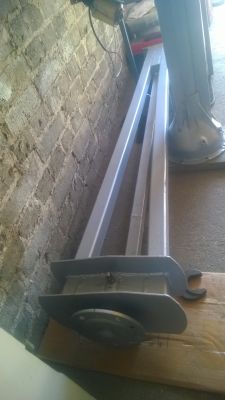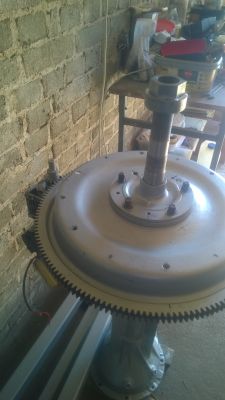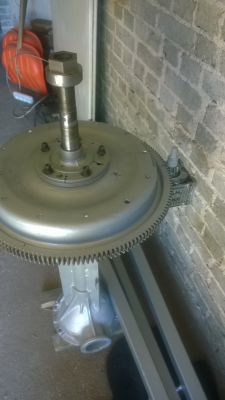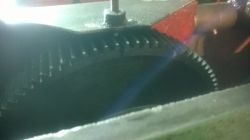I present a diagram of a solar tracker based on the L272M chip and bright red LEDs. The system worked when the LEDs were open a small angle and constantly illuminated by the sun. It also responded correctly when the LEDs were soldered straight and covered with the diaphragm. If the LED was coming out of the shadow, the wiper motor was turning in the right direction, if both were in the shadow it was standing.
The version with an H bridge on car relays has been tested by me in a spider mount. The relay consumed a current of 120-140 mA. L272M is a double power operational amplifier according to catalog notes with a load of 0.7-1A depending on the manufacturer. I found it in the motor of the headlight adjustment motor of cars, VAG flu from the 90s, produced by Bosch. There he acted as a DC motor driver. There are TLE4201 - 4206 chips in Hella motors. I burned TLE4201 during tests. I had only one motor with TLE4201 among 6 bought on the road for PLN 25. Both types of integrated circuits are suitable for this solution, the only difference is the housing - the L272M is smaller (DIP-8). I was dealing with the headlight adjustment motors because they are some servos and I was going to use a similar solution for horizontal rotation of photovoltaic panels. At the moment it should be 90% successful. The control will be a clock mechanism using a servo built on the above-mentioned operational amplifier. I am going to receive feedback on the rotation by means of the vertical Żuk rear bridge, which was left to me after the construction of the tractor. https://www.elektroda.pl/rtvforum/topic1352007-60.html#7700395
According to the presented diagrams, the solar tracker would control the photovoltaic panels only in the vertical axis. Which does not disqualify it from being used in both axes - I hope so. I used the L272M because its outputs can be used to control the H-bridge with car relays, which in my opinion greatly simplifies the design. Very few components are needed, and the system does not require any adjustments. Currently, I have little time and I am more concerned with the mechanics of my turntable. Before this solution was created by trial and error, I made a few prototypes. I even checked the 40-year-old solution, which was developed by Jeff Damm in 1978, then the reworked scheme was included in Nowy Elektronik 4/2004 (with a mistake). The problem was with alignment. https://www.freeenergyplanet.biz/homemade-windmachine/an-active-solar-tracking-system.html
https://www.elektroda.pl/rtvforum/topic2307857.html#10957958
https://www.elektroda.pl/rtvforum/topic2307057.html#10953977#10953977
This is quite a time-consuming method, and at times stressful and annoying.
Accordingly, I have a request to the forum community. If any of the forum members has the time and "processing capacity", and is also interested in the solar panels following the sun, please make a prototype and share your observations. Useful modifications will also be appreciated. I am not a professional electronics engineer , I created a solution based on news from the Internet and textbooks from the last century (mid-1980s). Below is a diagram. Regards, Heniek. I improved the producers that I replaced earlier - 1/18/2019 :cry:
I improved the producers that I replaced earlier - 1/18/2019 :cry:
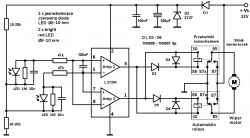
January 13, 2019
I mobilized a little and rummaged in the boxes. This is how my prototype "spiderwebs" look like. I am going to close the electronics with the integrated circuit and the sensor on the LEDs in a glass jar of some wife's cream. It had a single-turn thread, so it was easy to add a nut.
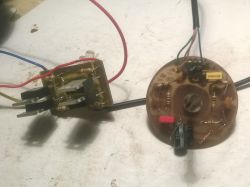
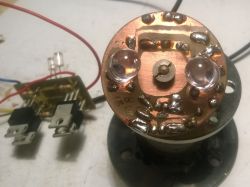
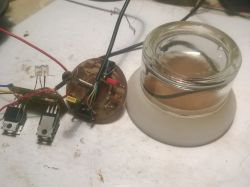

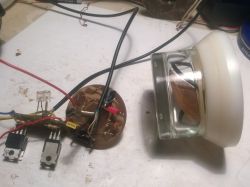
This is how the bulb from the workshop lamp works. The wiper motor comes from the Golf 3 and required a bit of preparation - it was two-speed, as is the case with the motors from the FSO 1500, the Polonez.
https://youtu.be/ri6OLR9TcGU
The version with an H bridge on car relays has been tested by me in a spider mount. The relay consumed a current of 120-140 mA. L272M is a double power operational amplifier according to catalog notes with a load of 0.7-1A depending on the manufacturer. I found it in the motor of the headlight adjustment motor of cars, VAG flu from the 90s, produced by Bosch. There he acted as a DC motor driver. There are TLE4201 - 4206 chips in Hella motors. I burned TLE4201 during tests. I had only one motor with TLE4201 among 6 bought on the road for PLN 25. Both types of integrated circuits are suitable for this solution, the only difference is the housing - the L272M is smaller (DIP-8). I was dealing with the headlight adjustment motors because they are some servos and I was going to use a similar solution for horizontal rotation of photovoltaic panels. At the moment it should be 90% successful. The control will be a clock mechanism using a servo built on the above-mentioned operational amplifier. I am going to receive feedback on the rotation by means of the vertical Żuk rear bridge, which was left to me after the construction of the tractor. https://www.elektroda.pl/rtvforum/topic1352007-60.html#7700395
According to the presented diagrams, the solar tracker would control the photovoltaic panels only in the vertical axis. Which does not disqualify it from being used in both axes - I hope so. I used the L272M because its outputs can be used to control the H-bridge with car relays, which in my opinion greatly simplifies the design. Very few components are needed, and the system does not require any adjustments. Currently, I have little time and I am more concerned with the mechanics of my turntable. Before this solution was created by trial and error, I made a few prototypes. I even checked the 40-year-old solution, which was developed by Jeff Damm in 1978, then the reworked scheme was included in Nowy Elektronik 4/2004 (with a mistake). The problem was with alignment. https://www.freeenergyplanet.biz/homemade-windmachine/an-active-solar-tracking-system.html
https://www.elektroda.pl/rtvforum/topic2307857.html#10957958
https://www.elektroda.pl/rtvforum/topic2307057.html#10953977#10953977
This is quite a time-consuming method, and at times stressful and annoying.
Accordingly, I have a request to the forum community. If any of the forum members has the time and "processing capacity", and is also interested in the solar panels following the sun, please make a prototype and share your observations. Useful modifications will also be appreciated. I am not a professional electronics engineer , I created a solution based on news from the Internet and textbooks from the last century (mid-1980s). Below is a diagram. Regards, Heniek.

January 13, 2019
I mobilized a little and rummaged in the boxes. This is how my prototype "spiderwebs" look like. I am going to close the electronics with the integrated circuit and the sensor on the LEDs in a glass jar of some wife's cream. It had a single-turn thread, so it was easy to add a nut.





This is how the bulb from the workshop lamp works. The wiper motor comes from the Golf 3 and required a bit of preparation - it was two-speed, as is the case with the motors from the FSO 1500, the Polonez.
https://youtu.be/ri6OLR9TcGU




